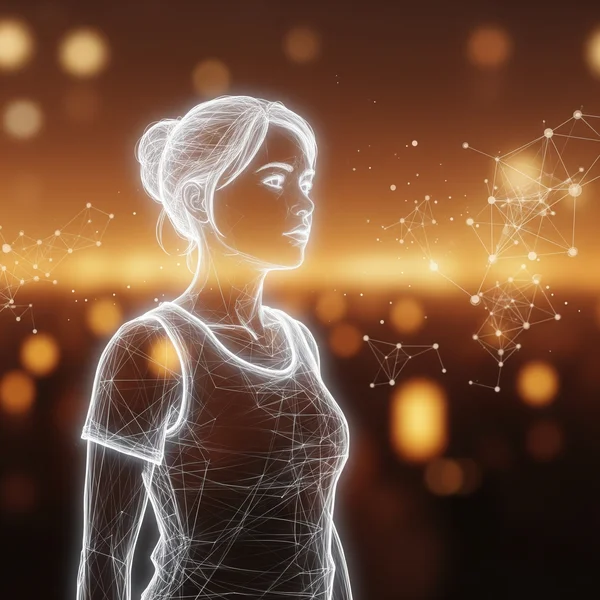7 Key Signs of Anhedonia: How to Know If You Have It
Does life sometimes feel like it's being shown in black and white instead of full color? Do activities that once brought you joy now feel flat and uninteresting? If this sounds familiar, you might be wondering what’s going on. One possible explanation is anhedonia, a term that describes the reduced ability to experience pleasure. But how do you know if you have anhedonia? This guide is here to help you understand the common signs. If these descriptions resonate with your experience, gaining more clarity is a positive next step. You can begin by using our free anhedonia test for a confidential self-assessment.

First, What Exactly Is Anhedonia? (And What It's Not)
So, what is anhedonia? In simple terms, anhedonia is the loss of interest and a diminished capacity to feel pleasure from normally enjoyable activities. It's a core symptom of major depressive disorder, but it can also appear in other conditions or on its own.
It's important to understand what it's not. Anhedonia isn't just a bad mood or feeling bored for a day or two. It's a more persistent and pervasive state where the brain's "reward system" seems to be turned down. While sadness is an active emotion of sorrow, anhedonia is often described as a void—an absence of feeling, or a profound sense of emotional numbness.
The 7 Key Signs You Might Be Experiencing Anhedonia
Recognizing anhedonia can be tricky because it often develops gradually. Here are seven key signs of anhedonia to watch for.
Sign 1: Loss of Interest in Your Favorite Hobbies
Think about what you used to love doing. Was it painting, playing guitar, gardening, or video games? A tell-tale sign of anhedonia is when these once-cherished activities now feel like a chore. You might find yourself thinking, "I should do it," but the internal spark of motivation and anticipation is gone. The activity itself brings no sense of satisfaction or pleasure.
Sign 2: Social Interactions Feel Draining, Not Rewarding (Social Anhedonia)
Do you find yourself avoiding calls from friends or turning down invitations you once would have jumped at? This is a specific form known as social anhedonia. It’s not about social anxiety or fear of judgment, but rather the fact that being with others no longer feels rewarding. Conversations can feel empty, and instead of feeling recharged after seeing loved ones, you might just feel tired and drained. This kind of social withdrawal is a significant sign.
Sign 3: Food, Music, or Touch Don't Bring Pleasure Anymore
Anhedonia can also affect physical and sensory pleasure. Your favorite meal might taste bland. A beautiful song that used to give you chills now just sounds like noise. A warm hug might not provide the comfort it once did. This loss of sensory joy is a powerful indicator that your ability to experience pleasure is diminished.
Sign 4: A Persistent Feeling of Emotional Numbness
This goes beyond just not feeling happy. It’s about not feeling much of anything at all. You might watch a funny movie without laughing or hear sad news without feeling sorrow. This state of emotional numbness can be one of the most unsettling aspects of anhedonia, leaving you feeling disconnected from yourself and the world around you, almost as if you're feeling empty inside.

Sign 5: Lack of Motivation, Even for Simple Tasks
Because activities no longer provide a sense of reward, the motivation to do them disappears. This isn't just about big projects; it can affect simple things like showering, cooking a meal, or tidying up. When your brain doesn't anticipate a positive feeling from completing a task, it becomes incredibly difficult to start it in the first place.
Sign 6: Withdrawing from Friends and Family
This is closely related to social anhedonia but extends to all relationships. When you can't share in the joy or excitement of others, it can feel isolating. You might pull away from your partner, children, or close friends because you feel you have nothing positive to contribute, or because the effort of pretending to be engaged is too exhausting.
Sign 7: You "Go Through the Motions" Without Real Feeling
This is the experience of living on autopilot. You might go to work, attend social events, and do all the things you're "supposed" to do, but you feel like an actor playing a part. There's no genuine emotional engagement or inner satisfaction. You're physically present, but emotionally absent.
Is It Anhedonia, Depression, or Just Burnout? Understanding the Overlap
It's common to wonder if what you're feeling is anhedonia, depression, or maybe just severe burnout.
- Key Differences: While there is significant overlap,
depressionoften includes feelings of sadness, guilt, and worthlessness, whereas anhedonia is primarily defined by the absence of pleasure.Burnoutis typically work-related and can improve with rest and a change of environment, while anhedonia is more pervasive across all areas of life. - Why They Co-occur: Anhedonia is a hallmark symptom of Major Depressive Disorder (MDD). It's possible to experience anhedonia as part of depression.
- The Importance of Not Self-Diagnosing: While understanding these signs is a helpful first step, it's crucial to remember that only a qualified mental health professional can provide an accurate diagnosis. This guide is for educational purposes only.
Your Next Step: From Understanding to Action
If you've read through these signs and see yourself in them, please know that you are not alone and that what you're feeling is real.

- Acknowledging Your Feelings is the First Step: Simply putting a name to your experience can be incredibly validating. Recognizing these patterns is the first and most important step toward feeling better.
- How a Self-Assessment Can Provide Clarity: To get a more structured look at your experiences, you might find a self-assessment helpful. Our confidential anhedonia test is based on established psychological scales and can provide a clearer picture of your current state in just a few minutes.
Common Questions About Anhedonia
Can you have anhedonia without being depressed?
Yes. While it's a core symptom of depression, anhedonia can also be a symptom of other conditions like schizophrenia, PTSD, or substance use disorders. It can also sometimes occur on its own.
Is anhedonia a permanent condition?
No, anhedonia is not necessarily permanent. With the right support, strategies, and sometimes professional treatment, it is possible to regain your ability to experience pleasure and joy.
How is anhedonia different from simple boredom?
Boredom is temporary and usually tied to a specific situation; you can relieve it by finding a new, stimulating activity. Anhedonia is a more persistent and generalized inability to feel pleasure from any activity, even those you used to love.
What is the first step if I think I have anhedonia?
A great first step is self-reflection and education, just like what you're doing now by reading this article. The next practical step could be taking a structured self-assessment to organize your thoughts. Our online anhedonia test is designed for this purpose, providing you with a private way to evaluate your symptoms before deciding whether to speak with a professional.
Disclaimer: This article is for informational purposes only and does not constitute medical advice. The information contained herein is not a substitute for, and should never be relied upon for, professional medical advice. Always seek the advice of your physician or other qualified health provider with any questions you may have regarding a medical condition.